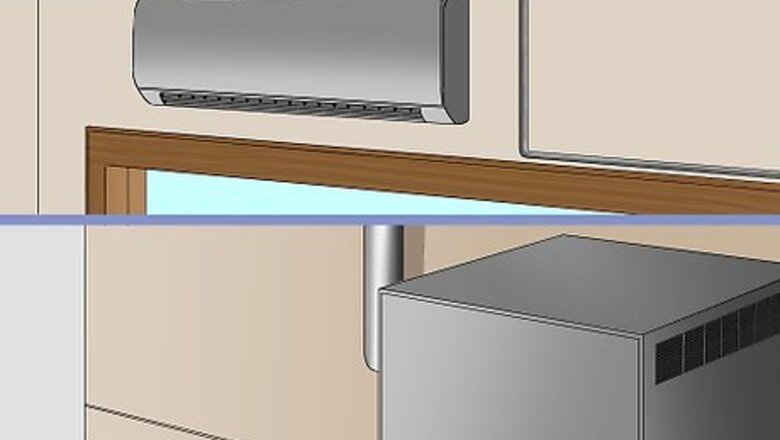
views
Testing a Valve With a Sensing Bulb
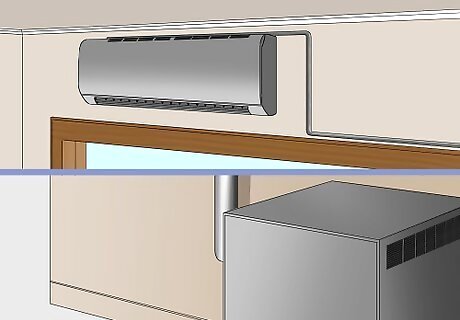
Locate the air conditioning unit. The unit’s location will depend on the application. Many central air conditioning and heating systems employ units both indoors and outdoors. The expansion valve is likely located inside the indoor unit Refer to the service manual for your house air conditioning system for guidance on what your air conditioning unit looks like and where it is likely located.
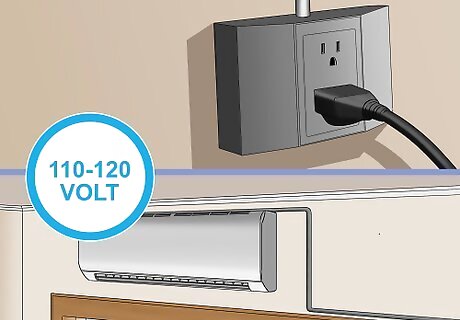
Make sure power is flowing to the air conditioner. In a house, just ensure the power is on and that the air conditioning unit is plugged into an appropriate power outlet. Most air conditioning units run on normal 110-volt household outlets. However, some larger applications may require a 220-volt connection. Regardless of the outlet type, ensure the air conditioner is firmly plugged into its outlet. Tip: If the air conditioner isn't getting power while it's plugged in, check the breaker and reset it if necessary.
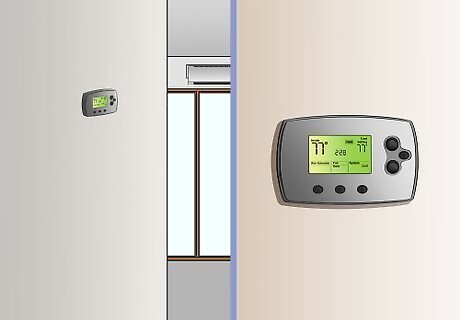
Turn the air conditioner on. Locate the thermostat that controls the air conditioner and set it to on. If your central air system also manages heat, make sure the thermostat is set on “cool.” If you're not sure how to turn on your particular air conditioner, check the instructions that came with the system.
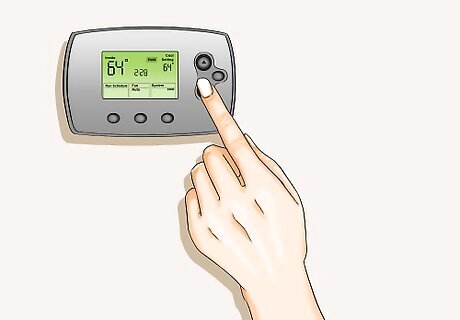
Set the air conditioner to its maximum setting. Use the thermostat to set the temperature as low as the system will permit. On digital thermostats, that usually requires pressing the down arrow repeatedly until it stops registering a change, usually at around 64 °F (18 °C). If there is a separate setting for the blower, set it to high. With dial style thermostats, simply turn the dial all the way to the left.
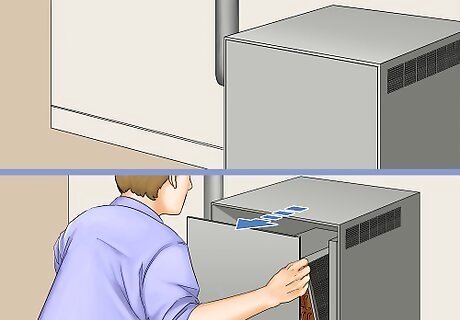
Remove any covers to allow access to the cooling unit. Household air conditioners are usually housed within a large metal case. Depending on your particular system, you may need to remove an entire panel, or there may be a service panel you can simply open to access the expansion valve. Set any bolts you remove from the air conditioner case someplace safe to reinstall when you reassemble the case.
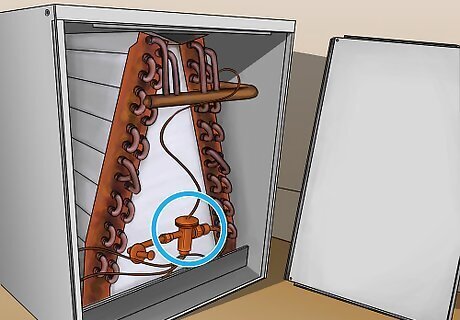
Look for the expansion valve inside the cooling unit. While there are a large variety of expansion valve types on the market, most with sensing bulbs look like a cylinder with a nozzle sticking out of the side and a disc or saucer at the top. The sensing bulb usually connects to the top of the disc via a wire. If you still can't find the valve, look through your service manual or search for your air conditioning model online to find a diagram that can assist you.
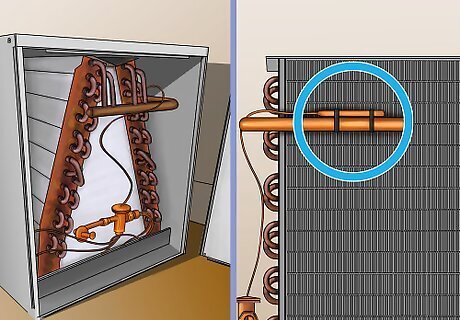
Take the sensing bulb out of the bulb well. The process of removing the sensing bulb will be different for almost every make and model of air conditioner. Follow the line from the top of the expansion valve to the where the bulb is located. Sometimes, you simply need to cut away the insulation on the line the bulb is connected to and slide the bulb out of the bracket that holds it in place. The bulb will look like a cylinder with tapered edges - almost like a metal tootsie roll that’s still in its package. Do not detach the bulb from its line. You only need to remove it from the bracket where it's seated.

Place the sensing bulb in a glass of warm water or grip it in your hand. You need to raise the temperature of the sensing bulb to determine if the expansion valve is activating. One easy way is to simply drop it in a cup of warm water. Otherwise, you can simply hold the bulb in your hand throughout the duration of the test. You don’t have to raise the temperature much, so the warmth of your hand is plenty. You may want to use a cup of warm water just to free up your hands while you wait for the bulb to warm.

Wait 15 minutes. It will take some time for the warmth from your hand or the cup of water to get the expansion valve to engage. Keep warmth applied to it and be prepared to continue doing so for the full 15 minutes. The valve may engage sooner than 15 minutes. That is considered the top end of the waiting period. Avoid switching hands or removing the bulb from the water at all during this time.
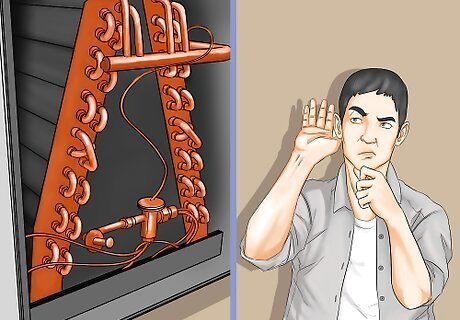
Listen to see if refrigerant starts flowing from the evaporator. You will hear the expansion valve clearly engage and allow refrigerant to start flowing through the system. If you don’t hear it engage within 15 minutes, your expansion valve needs to be replaced. The expansion valve will audibly click and you’ll likely even be able to hear the refrigerant begin to flow. Return the sensor bulb to where you found it if the expansion valve worked properly.
Using a Pressure Gauge on H-Block Valves
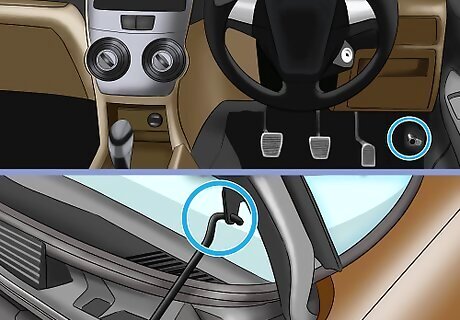
Gain access to the air conditioning unit. Open the hood of the vehicle using the hood release near your left knee when sitting in the driver’s seat. Then ,release the safety latch and open the hood. While air conditioners are mounted differently in different vehicles, you can always find them mounted on the same side of the engine as the serpentine or accessory belt that drives it. If you have trouble locating the air conditioning unit in your vehicle, refer to your repair manual for guidance.
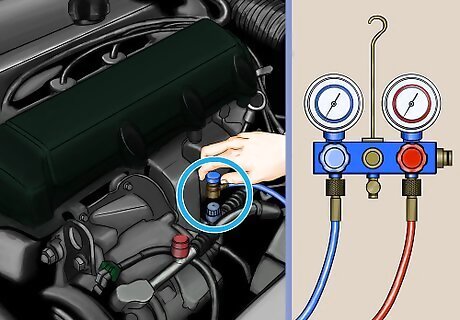
Connect the red pressure gauge to the high side charging port. The air conditioner pressure gauge has red and blue lines that coincide with red and blue gauges. The red line will only fit on a vehicle’s high pressure charging port. Locate the port on your air conditioning system and press the connection together until you hear it click. The high side charging port will be a nozzle on a metal line coming from the air conditioner. Of the two on your air conditioner, it will be higher on the engine. If you don’t hear the connection click, it isn’t tight yet.
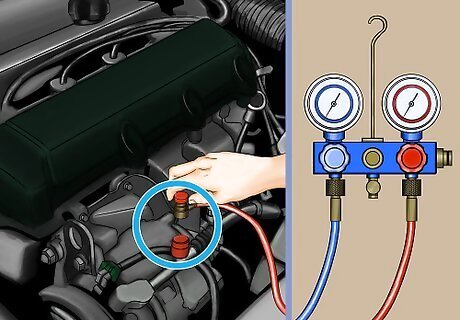
Plug the blue gauge line into the low side charging port. The blue line for the blue gauge will only fit on the low side charging port in your vehicle, so there’s no risk of mixing the lines up. Locate the low side charging port and then press the connector on it firmly until you hear a click. Make sure the connection clicks. Otherwise, the refrigerant may leak out.
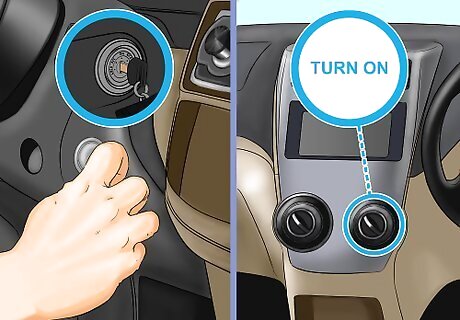
Start the car and turn the air conditioner on. Insert the key into the ignition and turn it to start the vehicle. Then use the controls on the center console to turn on the air conditioner. Make sure the vehicle is in park and the parking brake is engaged before you start it. Leave the engine running for the remainder of the test.
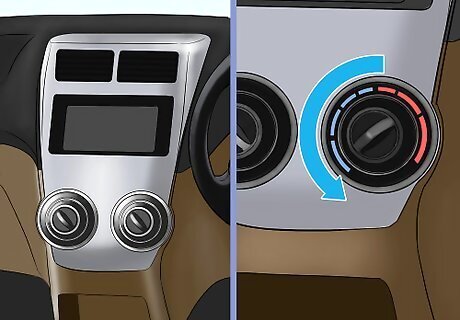
Set the air conditioner to its coldest, maximum setting. On some vehicles, you may need to set the temperature to its lowest possible setting, while on others you may simply need to turn the temperature knob all the way to the left. Then set the blower to “high.” In many vehicles, there is a “Max A/C” button or setting. Make sure to turn that on.
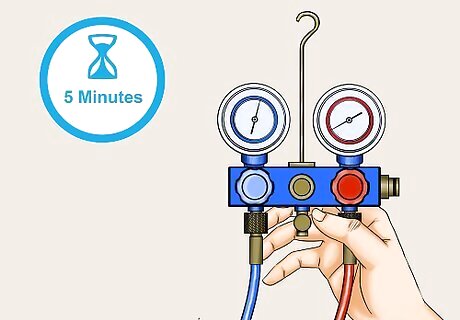
Wait for the needles on both gauges to stabilize. When you first start the engine, the needles on both the red and blue gauges will jump around rapidly. Wait about 5 minutes, or until the gauges are stabilized and you get a consistent reading. When the arrows stop bouncing around the gauge, that’s considered stabilized. Tip: If the gauges simply read "0," it means there is no refrigerant in the system to register. Refill the system before continuing the test.
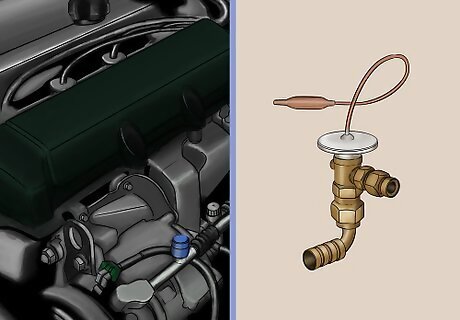
Locate the sensing disc on the expansion valve. The sensing disc is the round disc located at the top of the H-block style expansion valve. It looks like a small metal saucer mounted on the very top of the valve. The sensing disc may be mounted close to the air conditioner or even on the firewall that divides the engine bay from the vehicle’s cabin. If you have trouble locating it, refer to an application specific repair manual for further guidance. The expansion valve itself will look like a metal rectangle with a disc on the top.
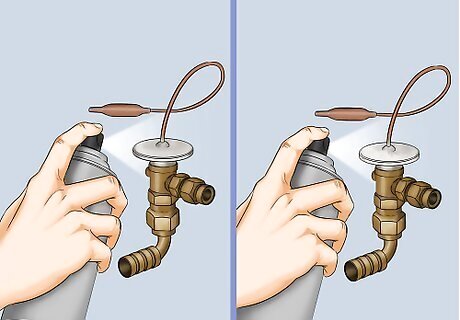
Spray the sensing disc with canned air until it’s frosted over. Use the sort of canned air you can purchase at office supply stores to clean out your keyboard to chill the sensing disc so you can assess how it responds to the drop in temperature. Keep spraying the canned air onto the disc until it looks white and frozen over. Once it’s frosted over, wait a few minutes to see how the expansion valve responds.
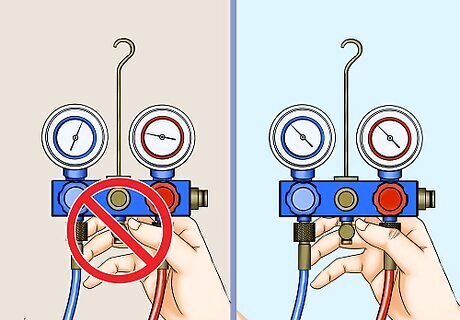
Watch the high-pressure gauge for a drop. If the valve is working properly, the high-pressure reading will drop somewhere between 50 to 150kpa. Then, as the frost melts on the sensing disk, the reading should return to what it was previously. If the high-pressure gauge does not show a drop and return in pressure, then the valve is bad and needs to be replaced.

















Comments
0 comment